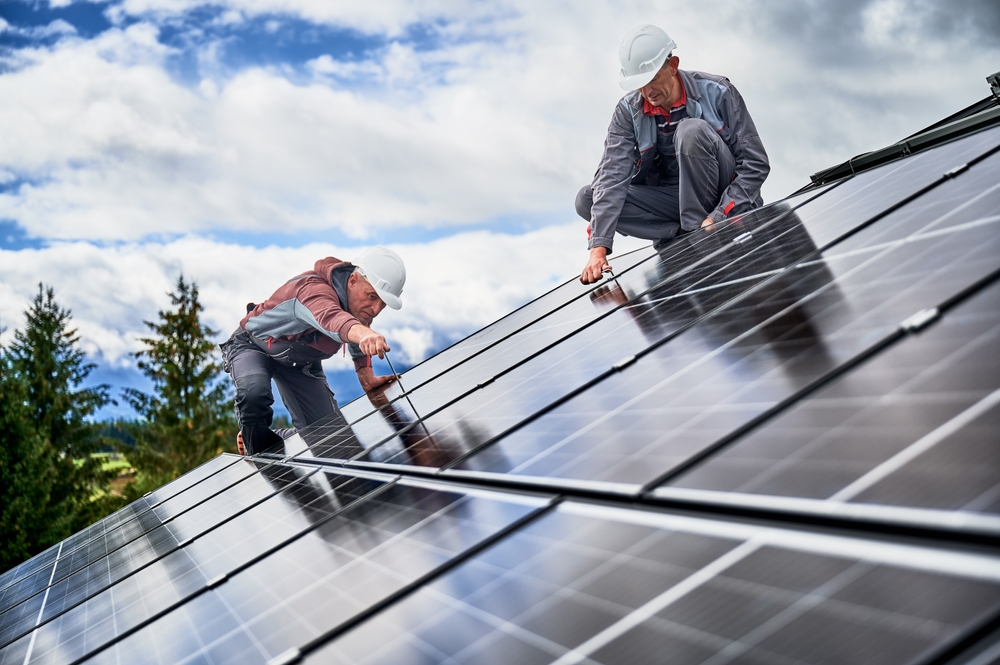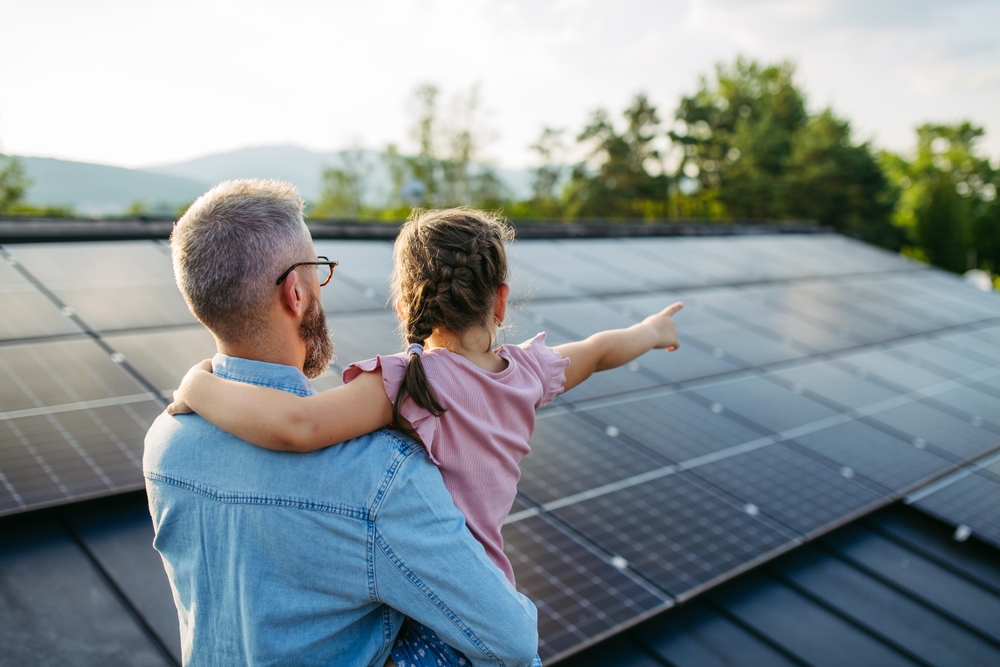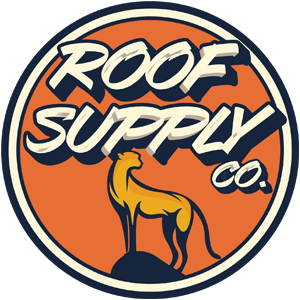Generating renewable power while protecting your building gives you a chance to cut energy costs and increase property value at the same time. Solar roofs integrate photovoltaic technology into your roofing system, producing electricity from sunlight while serving as complete weather protection. Roof Supply by G&F San Diego specializes in solar roof installations that maximize power production, maintain structural integrity, and deliver reliable performance for decades, helping property owners across the construction industry adopt clean energy without compromising on quality or protection.
Solar Roofs

Understanding Solar Panel Roofing
Solar roofs represent an integrated approach where photovoltaic components become part of your actual roofing system rather than just mounting panels on top of an existing roof. This integration comes in different forms, from solar shingles that replace traditional roofing materials to panel systems installed on roof structures designed specifically to support energy generation. Construction professionals are increasingly choosing solar roof technology as costs drop and efficiency improves, making renewable energy accessible for residential and commercial property owners looking to break free from rising utility rates.
Modern solar roof systems generate substantial power even in less-than-ideal conditions, thanks to advances in photovoltaic cell technology and system design. Unlike early solar installations that needed perfect south-facing slopes, today’s systems work effectively across various roof angles and orientations. Pairing with battery storage lets you capture excess energy during peak production hours for use during evenings or cloudy days, essentially creating your own power grid. Whether you’re building new construction or replacing an old roof, adding solar capability turns your roof from a passive protective element into an active money-making asset.
Benefits of Rooftop Solar
Energy Cost Reduction
Solar roofs slash monthly electricity bills by generating free power directly from sunlight, with many systems producing enough energy to eliminate utility costs entirely. Your savings start immediately after activation and continue for decades, with typical payback periods ranging from 7-12 years depending on local electricity rates and available incentives. Once the system pays for itself, every kilowatt-hour generated represents pure savings that compound over the installation’s 25-30 year lifespan.
Significant Property Value Increase
Homes and buildings with solar roofs command premium prices in real estate markets, with studies showing value increases of 3-4% on average. Buyers recognize the immediate benefit of reduced operating costs and appreciate the environmental responsibility solar systems represent. This added value often exceeds the net cost of installation after incentives, meaning solar roofs can pay for themselves through increased property value alone, even before considering energy savings.
Environmental Impact Reduction
Solar roofs eliminate reliance on fossil fuel-generated electricity, reducing your carbon footprint by several tons annually depending on system size. Each kilowatt-hour your solar roof produces prevents air pollution and greenhouse gas emissions associated with traditional power generation. Over a typical 25-year lifespan, a residential solar roof offsets emissions equivalent to planting thousands of trees or removing vehicles from roads for years, creating measurable positive environmental impact.
Energy Independence and Security
Solar roofs provide protection against utility rate increases that have averaged 2-3% annually over recent decades. Your energy costs become predictable and controllable rather than subject to market fluctuations, geopolitical events, or utility company decisions. When paired with battery storage, solar roofs maintain power during grid outages, ensuring your property remains operational during emergencies or natural disasters that leave conventional buildings without electricity.

Our Solar Roof Installation Process

Why Choose Us for Solar-Powered Roofs
Roof Supply by G&F San Diego combines roofing expertise with solar technology knowledge, positioning us uniquely to deliver integrated solutions that other contractors can’t match. Our dual specialization means we understand both the structural considerations of roof installations and the electrical requirements of solar systems, ensuring your project succeeds on all fronts. We hold certifications from leading solar manufacturers and maintain licensing for both construction and electrical work, giving you confidence that every aspect of your solar roof meets industry standards.
Our approach prioritizes transparency throughout your solar roof project, from initial cost estimates through final activation. We explain available incentives, help navigate utility interconnection processes, and provide realistic production forecasts based on your specific location and roof characteristics. Your investment represents a significant commitment, and we honor that by delivering exceptional workmanship, using premium components, and standing behind our installations with comprehensive warranties that protect both roofing and solar system elements for years to come.

Power Your Property With Solar Roofs Today
Solar roofs represent a transformative investment that converts your building’s largest surface into a productive energy asset. The combination of utility savings, increased property value, and environmental benefits creates compelling advantages that strengthen over time. When you’re ready to embrace renewable energy through professional solar roof installation, Roof Supply by G&F San Diego brings the integrated expertise your project demands.
Check us on Google Maps to see our completed solar roof projects, learn about evolving solar technology, and stay informed about incentive programs that can reduce your installation costs. Reach out at (619) 878-1531 to begin your transition to clean, renewable energy with a team committed to technical excellence, transparent service, and your long-term satisfaction.
FAQs
What roof is best for solar panels?
Metal roofs and asphalt shingle roofs work excellently for solar panel installations, with metal offering the longest lifespan to match solar panel warranties of 25-30 years. Tile and slate roofs also support solar panels well, though installation costs may be higher due to specialized mounting requirements. The ideal roof should have at least 15-20 years of remaining life before requiring replacement, adequate structural capacity to support panel weight, and minimal shading from trees or nearby structures.
Are there roof replacements that include solar?
Yes, integrated solar roof systems combine roofing replacement with solar installation in a single project, using products like solar shingles that function as both weather protection and energy generation. This integrated approach often proves more cost-effective than separate roofing and solar projects, as labor and materials overlap significantly. Many contractors now offer packaged solar roof replacements that include removal of old roofing, installation of new decking and underlayment, and integration of photovoltaic components throughout the roofing surface.
Can you put solar panels on a metal roof?
Solar panels install exceptionally well on metal roofs using specialized mounting systems that attach without penetrating the roofing surface, preserving weatherproofing integrity. Metal’s durability means it will likely outlast the solar panels themselves, eliminating concerns about needing roof replacement mid-way through your solar system’s lifespan. The smooth surface and structural strength of metal roofing actually simplify solar installation compared to other materials, often reducing installation time and costs.
How many solar panels can I fit on my roof?
The number of solar panels your roof can accommodate depends on available roof area, panel dimensions, roof pitch, and spacing requirements for maintenance access and fire code compliance. A typical residential roof can fit 15-30 panels, generating 5-10 kilowatts of power, though larger roofs may accommodate significantly more. We calculate optimal panel placement during system design, maximizing production while maintaining required setbacks from roof edges and ensuring panels avoid shaded areas that reduce efficiency.
How to clean solar panels on roofs?
Clean solar panels using plain water and a soft brush or squeegee, avoiding abrasive materials or harsh chemicals that can damage panel surfaces or anti-reflective coatings. Most locations receive sufficient rain to keep panels reasonably clean, though areas with extended dry periods, high pollen, or dust may benefit from occasional manual cleaning. Always prioritize safety when accessing roof-mounted panels—many homeowners hire professional cleaning services rather than risk falls, or choose to clean only panels accessible from ground level using extension poles.

